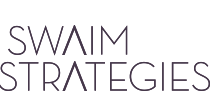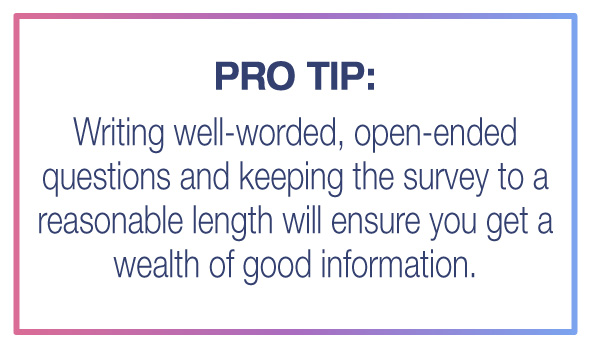What to Do With Attendee Data After Your Nonprofit’s Event
Between booking a venue, finding entertainment, getting a caterer, planning an event agenda, and marketing your event to your supporters (all while staying within budget!), pulling off an event is a feat for any nonprofit.
But events come with many benefits too, making them well worth the hours required to plan and carry them out. Events help you pull in fundraising dollars, bring supporters together behind your cause, and connect with your sponsors. There’s also one more benefit to events that organizations often overlook: events can provide useful donor data for your nonprofit.
Each supporter who attends your event is unique, with different giving habits, communication preferences, and history of involvement with your organization. When you gather attendee data after your event, you can track metrics that will help you to improve your nonprofit’s relationship with those attendees. According to Salsa’s list of nonprofit key performance indicators, you might track one or more of the following:
- Average gift size
- Fundraising ROI
- Pledge fulfillment percentage
- Donor retention rate
- Email open rate
Once you’re actively tracking your event metrics, you can leverage that information to anticipate your supporters’ needs so you can retain them and move your cause forward with their help. In this post, we’ll walk you through what you should do with attendee data after your events so that you can use this information to your advantage. We’ll cover the following steps:
- Store individuals’ data in your CRM.
- Show appreciation in a personalized way.
- Offer relevant opportunities to deepen engagement.
- Reach out with surveys to gather additional data.
Harnessing the power of event attendee data takes some knowledge and the right software. With these tips, you’ll be ready to learn more about your supporters and improve their experience with your organization. Let’s begin!
1. Store individuals’ data in your CRM.
From the moment your supporter follows a link from a social media post to your event microsite to the time they leave your event venue at the end of the night, they’re providing you with information that can give your organization valuable insights. If you capture that data and use it correctly, you’ll have a better understanding of what your supporters need from you to stay engaged with your cause.
To use that data effectively, you’ll first need to choose the right nonprofit CRM for your data to flow into. Here are a few features to look for when shopping for your CRM:
- Rich donor profiles: You need software that will help you capture as much information about your donors as possible. This includes their interactions with your organization, donations, communication preferences, and any other details when you’re able to create nearly unlimited fields for tracking the custom information that is meaningful to your specific organization.
- Donor management and reporting solutions: Your CRM should be easy to use and update, allowing you to prioritize data hygiene. Additionally, reporting dashboards and custom report templates can help you organize the information in your CRM and use it to make decisions about your operations.
- Built-in marketing tools: Choose a CRM that will help you customize your marketing materials like email and direct mail. You should also be able to prepare marketing materials based on donor segments, the groups you sort your donors into based on shared characteristics, for a more personalized marketing message.
There are many options out there for your CRM, but no matter which one you choose, make sure that above all, you’re able to leverage it to maintain accurate records and gain a holistic view of your attendees’ involvement in your organization.
2. Show appreciation in a personalized way.
Imagine your nonprofit hosts a walk-a-thon event. One of your participants puts in the effort weeks in advance to train for the event so they can collect the most pledges possible. They’re proud of all the money they were able to raise for your organization, but after the event is over, they never hear from your nonprofit again. Your supporter becomes disillusioned with your organization, feeling like their effort was all for naught.
Let this hypothetical situation serve as a cautionary tale—to retain your donors, you have to show them gratitude! When you gather data about them from registration pages, donation forms, and surveys and store it in your CRM, you have all the information you need to send genuine thank-yous and show your supporters how much of a difference they’re making to your cause.
Here are some different ways you can use data in your CRM to thank attendees after your event:
- Use your supporters’ names. This may sound like a no-brainer, but too many nonprofits still rely on generic salutations in their thank-you messages. “Dear Donor” just doesn’t cut it. Try “Hello, Mr. Meyers” or “Hi Sydney” instead. This will give your message a personal touch from the beginning.
- Adhere to communication preferences. If you have a note in your CRM about a group of donors who prefer to receive direct mail instead of emails, adhere to those preferences. Supporters want to be involved with organizations that listen to their needs and input, so taking the time to customize the form your thank-you message takes will go a long way.
- Personalize messages with supporter-specific information. Your thank-you notes should be all about your donor, not your organization. Get information from your CRM like your donors’ donation amounts and dates, why they attended your event, or how long they’ve been volunteering for your organization. Then you can better customize the note to reflect their experience with your organization thus far and give them a sincere thank you.
One last tip for writing genuine thank-you notes: Have someone at your organization provide a handwritten signature for each message, even if it’s a digital signature. This is one last personal touch that will make your donors feel like their event attendance, donation, or volunteer hours are truly making a difference.
3. Offer relevant opportunities to deepen engagement.
After an event ends, your nonprofit should offer additional ways for your attendees to stay involved with your cause. You can let your attendees know about these opportunities in an email newsletter, a personalized thank-you card, or even a direct message on social media. However, you decide to inform them about other ways to engage, make sure you provide relevant opportunities.
For example, if you have information in your CRM about one event attendee’s desire to do a service project for your organization on a corporate volunteer day, you should connect them with your volunteer coordinator and get them more information about making that happen. As we discussed in the previous section, donors like to feel like they’re being heard by the organizations they engage with. Make sure their preferences and interests don’t go unnoticed.
Here are some opportunities for further engagement that you might offer to event attendees:
- Volunteering opportunities. Provide interested event attendees with the information they need to register and train for different volunteer opportunities and communicate their volunteering preferences to your team. Check out Mobilize’s article on best practices for recruiting volunteers to learn more about building a strong pipeline of volunteer support.
- Registering for another event. Most supporters love the opportunity to attend events. They like mingling with people who have similar interests and hearing about your organization’s updates all while participating in a fun activity. Make sure you advertise upcoming events to those donors who, according to your CRM data, have a high attendance record for past events.
- Giving a monetary donation. Some event attendees will give the day of your event or leave with the intention to give. Make sure you put in the effort to follow up with those who are interested in donating to your cause. Provide them with a link to your donation page. You should also give them information about how to use your matching gift database and how to sign up for your recurring giving program so they can boost their impact.
When you personalize the opportunities for further engagement with your nonprofit, your event attendees will be set up with the tools and resources they need to continue interacting with your organization. This will make it more likely that you’ll retain your support in the long run.
4. Reach out with surveys to gather additional data.
One of the benefits of being on top of your constituent relationship management process is that you can identify ways to optimize future fundraising campaigns and events. Once you’ve been consistently collecting data from event attendees and tracking key performance indicators for your nonprofit, you should also take opportunities to gather additional data from your attendees.
We suggest using a survey that will allow you to gather more qualitative data directly from attendees. The great thing about surveys is that the supporters who care the most will be most likely to fill them out, so you’ll gain some great insights.
Here are some suggested questions for your post-event survey:
- What did you enjoy most about our event? What did you dislike about our event? Gauge what you should repeat in the future and what you should do differently by getting attendees’ perspectives on the event. Your team may have been so invested in the event that you couldn’t see what went wrong and what went really well.
- How did you hear about our event? This is an excellent question for getting some information about how well your marketing strategy worked. Your attendees might have learned about your event from a video advertisement, a poster at their favorite cafe, or a text from a friend. This will help you to know where to invest your marketing dollars next time.
- What are some other ways you’d like to be involved in our organization? This can help inform the volunteering, donation, and event opportunities you direct your attendees to after the event, helping you to make your suggestions more personalized.
Remember, the primary goal of a survey with questions like these is to gather insights that will help refine future events and supporter outreach.
Whether you’re planning to host a hybrid fundraising event or you’re throwing an in-person golf tournament to thank your major donors, recording attendee data after the fact is essential to helping you improve donor relations.
With the right CRM and these tips, you’ll be ready to take on the task of gathering, protecting, and using event attendee data to improve future events and your outreach efforts. Good luck!







